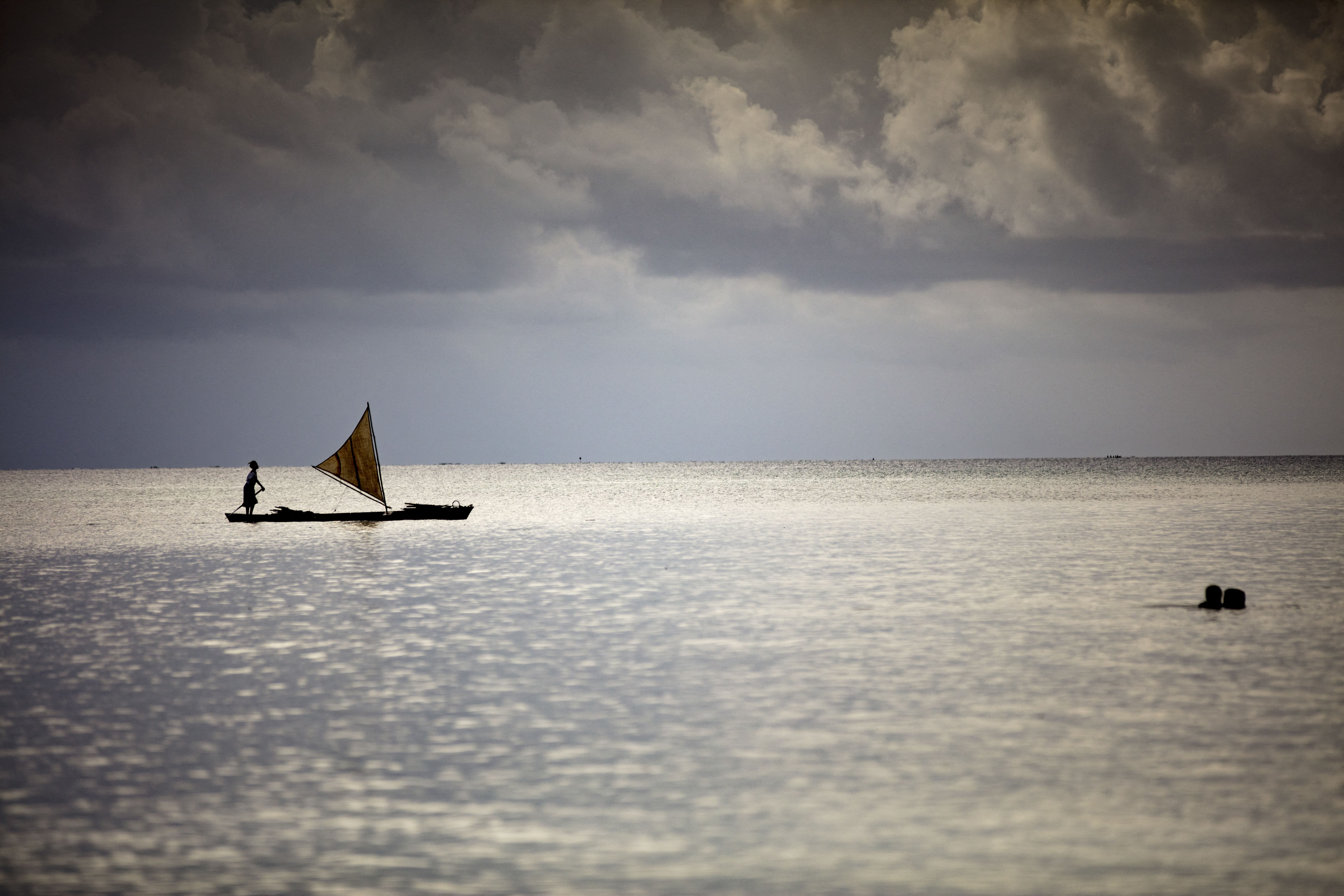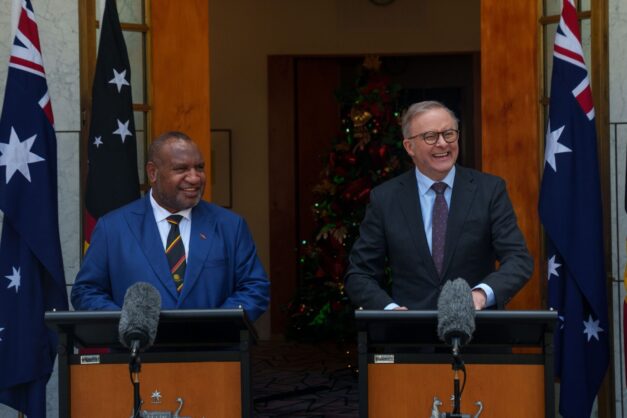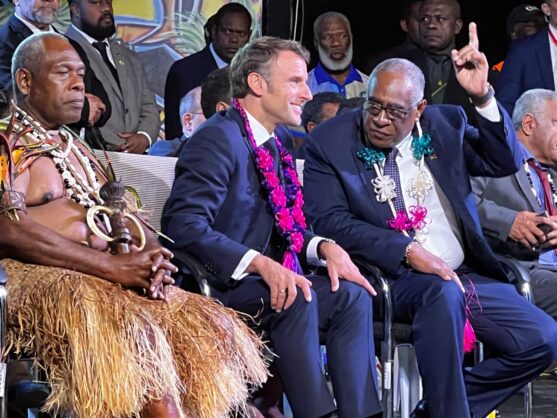Can Oceanic diplomacy solve the Pacific’s maritime disputes?

DALMASSO MONICA / HEMIS VIA AFP
The Mota Lava Treaty between Solomon Islands and Vanuatu shows how traditional Oceanic diplomacy can be incorporated into current practice, Anna Naupa writes.
On 7 October 2016, neighbouring countries Vanuatu and Solomon Islands signed a historic maritime boundary agreement after 33 years of negotiations. This significant occasion marked the end of more than a century of the local people living with the legacy of a randomly drawn line on colonial maps.
In the wake of ceremonial dances, feasts, and customary exchanges at the conclusion of the Torba-Temotu Cultural Arts Festival, the Mota Lava Treaty — named after the Vanuatu island where the event took place — was signed by the two countries and sealed with the drinking of kava and chewing of betel nut.
In his public address, Solomon Islands Prime Minister Manasseh Sogavare said: “I am proud to be a Melanesian. The white man drew imaginary lines [between the islands]… but we are one people!”
The Mota Lava Treaty was built on the recognition of long-established cultural connections and practices and can provide a number of lessons for creating greater public legitimacy in future negotiations.
For example, it shows how cultural and relational exchanges are central to successful Pacific border diplomacy. In the case of Vanuatu and Solomon Islands, this took precedence over the international legal technicalities that had characterised the negotiations in previous decades. Since negotiations began, significant resources were invested to ensure that the demarcating of maritime boundaries corresponded with the correct technical requirements provided for under the United Nations Law of the Sea Convention (UNCLOS) III.
However, in Vanuatu and Solomon Islands, national officials found that the convention’s underlying assumptions of transactional relations did not gel with their focus on collaborative negotiation and agreement.
A senior Vanuatu government negotiator said: “Completing border delineations between Solomons and Vanuatu was an essential part of the ‘unfinished business’ of independence. But it needed to be inclusive of a cultural approach, which the technically bureaucratic UNCLOS process did not really give room for.”
UNCLOS III created a multilateral, institutional approach to boundary negotiations that mapped out technically rigorous pathways for negotiating states. Its legal provisions recognised territorial entitlements. Ultimately however, the negotiator argued it was the carving out of space for cultural provisions – that recognised Melanesian bonds – which sealed the Mota Lava Treaty.
“The UNCLOS process prioritised the line, but for Vanuatu, the relationship was more important than the line; the line was not to divide, but to bridge our nations. We just needed to sit down and share kava or betel nut and work it out without the experts pulling us back to coordinates and reef points,” they said.
The agreement also emphasised that cultural legitimacy is central to enduring Pacific state relations. In Melanesia, for a diplomatic agreement to be seen as legitimate, it must meet the norms not only of a multilateral system but also those of the peoples and cultures who will live with the legacy of the border agreement.
The traditional ceremony that preceded the signing of the Mota Lava Treaty contained various local, culturally symbolic elements designed to assure each the good faith of each party. First, traditional chiefs and church representative led ceremonial rites to gain customary permission from the people of Mota Lava to utilise their land for a state treaty signing. To demonstrate that these actions were not tokenistic, the Torba-Temotu Cultural Arts Festival went on to include a traditional pig-killing ceremony, customary dances, and the sharing of kava and betel nut.
By ensuring the signing aligned with both traditional and international legal practices, it legitimised the border agreement at both levels in a manner that resonated with those primarily affected – the Torba-Temotu provincial communities and the governments of Solomon Islands and Vanuatu.
The inclusion of chiefs and church leaders in this process also shows the importance of cultural and non-state actors in effective Oceanic diplomacy. The presence of the head of the Anglican Church of Melanesia Bishop Worek and the head of the Vanuatu Christian Council Pastor Moses Obed Tallis, as well as the paramount chiefs of Mota Lava and Teamotu Province Jerry Alpie and Patterson Oti, sent a clear signal that Oceanic diplomacy extends beyond immediate state bureaucracies, to encompass traditional and community leaders.
Recognition that state actors and diplomats are only one facet of Oceanic diplomacy has practical, administrative implications in small Pacific bureaucracies as it gives states much wider administrative and diplomatic resources than would otherwise be available. It also reflects the rich heritage of thousands of years of intercultural relationships in the Blue Pacific. Importantly, Oceanic diplomacy gives greater public ownership of the outcomes by engaging with cultural and community networks beyond narrow state diplomatic channels.
The Solomon Islands–Vanuatu 2016 maritime boundary agreement process shows how Oceanic diplomacy can be of great value in supporting mutually beneficial and politically legitimate outcomes for the remaining unresolved Pacific maritime boundaries.
However, this requires the support of state institutions, both regional and external. One way to do this is through broadening and elevating the role Pacific Island cultures play in interstate negotiations.
The potential impact of incorporating Oceanic diplomatic practice into future agreements cannot be understated, particularly as the issue of sea-level rise brings maritime boundaries to the fore.
Anna Naupa
This article is based upon a paper published by ANU Department of Pacific Affairs (DPA) as part of its ‘In brief’ series. The original paper can be found here. This article was originally published on Policy Forum.
More Stories

Blog - 11 Dec 2023
A PNG-Australia security framework: not a treaty but solid nonetheless
Papua New Guinea PM James Marape and Australian PM Anthony Albanese face the media after signing a historical Bilateral Security Agreement on 7 December in Canberra. Credit: PM Albanese Facebook On 7 December 2023, the prime ministers of Australia and Papua New Guinea signed an historic security agreement in Canberra. It has taken approximately…

Blog - 24 Aug 2023
The Islands Blocking Vanuatu-France Relations
President Macron promises to resolve a territorial dispute with Vanuatu, writes Ben Bohane in Port Vila. When French President Emmanuel Macron appeared at the Melanesian Arts Festival in Vanuatu recently, he received a rousing welcome from the crowd by speaking in the three official languages of Vanuatu: Bislama, French and English. “Let me tell you…






